#ai education
Text
AI is here – and everywhere: 3 AI researchers look to the challenges ahead in 2024
by Anjana Susarla, Professor of Information Systems at Michigan State University, Casey Fiesler, Associate Professor of Information Science at the University of Colorado Boulder, and Kentaro Toyama
Professor of Community Information at the University of Michigan

2023 was an inflection point in the evolution of artificial intelligence and its role in society. The year saw the emergence of generative AI, which moved the technology from the shadows to center stage in the public imagination. It also saw boardroom drama in an AI startup dominate the news cycle for several days. And it saw the Biden administration issue an executive order and the European Union pass a law aimed at regulating AI, moves perhaps best described as attempting to bridle a horse that’s already galloping along.
We’ve assembled a panel of AI scholars to look ahead to 2024 and describe the issues AI developers, regulators and everyday people are likely to face, and to give their hopes and recommendations.
Casey Fiesler, Associate Professor of Information Science, University of Colorado Boulder
2023 was the year of AI hype. Regardless of whether the narrative was that AI was going to save the world or destroy it, it often felt as if visions of what AI might be someday overwhelmed the current reality. And though I think that anticipating future harms is a critical component of overcoming ethical debt in tech, getting too swept up in the hype risks creating a vision of AI that seems more like magic than a technology that can still be shaped by explicit choices. But taking control requires a better understanding of that technology.
One of the major AI debates of 2023 was around the role of ChatGPT and similar chatbots in education. This time last year, most relevant headlines focused on how students might use it to cheat and how educators were scrambling to keep them from doing so – in ways that often do more harm than good.
However, as the year went on, there was a recognition that a failure to teach students about AI might put them at a disadvantage, and many schools rescinded their bans. I don’t think we should be revamping education to put AI at the center of everything, but if students don’t learn about how AI works, they won’t understand its limitations – and therefore how it is useful and appropriate to use and how it’s not. This isn’t just true for students. The more people understand how AI works, the more empowered they are to use it and to critique it.
So my prediction, or perhaps my hope, for 2024 is that there will be a huge push to learn. In 1966, Joseph Weizenbaum, the creator of the ELIZA chatbot, wrote that machines are “often sufficient to dazzle even the most experienced observer,” but that once their “inner workings are explained in language sufficiently plain to induce understanding, its magic crumbles away.” The challenge with generative artificial intelligence is that, in contrast to ELIZA’s very basic pattern matching and substitution methodology, it is much more difficult to find language “sufficiently plain” to make the AI magic crumble away.
I think it’s possible to make this happen. I hope that universities that are rushing to hire more technical AI experts put just as much effort into hiring AI ethicists. I hope that media outlets help cut through the hype. I hope that everyone reflects on their own uses of this technology and its consequences. And I hope that tech companies listen to informed critiques in considering what choices continue to shape the future.
youtube
Kentaro Toyama, Professor of Community Information, University of Michigan
In 1970, Marvin Minsky, the AI pioneer and neural network skeptic, told Life magazine, “In from three to eight years we will have a machine with the general intelligence of an average human being.” With the singularity, the moment artificial intelligence matches and begins to exceed human intelligence – not quite here yet – it’s safe to say that Minsky was off by at least a factor of 10. It’s perilous to make predictions about AI.
Still, making predictions for a year out doesn’t seem quite as risky. What can be expected of AI in 2024? First, the race is on! Progress in AI had been steady since the days of Minsky’s prime, but the public release of ChatGPT in 2022 kicked off an all-out competition for profit, glory and global supremacy. Expect more powerful AI, in addition to a flood of new AI applications.
The big technical question is how soon and how thoroughly AI engineers can address the current Achilles’ heel of deep learning – what might be called generalized hard reasoning, things like deductive logic. Will quick tweaks to existing neural-net algorithms be sufficient, or will it require a fundamentally different approach, as neuroscientist Gary Marcus suggests? Armies of AI scientists are working on this problem, so I expect some headway in 2024.
Meanwhile, new AI applications are likely to result in new problems, too. You might soon start hearing about AI chatbots and assistants talking to each other, having entire conversations on your behalf but behind your back. Some of it will go haywire – comically, tragically or both. Deepfakes, AI-generated images and videos that are difficult to detect are likely to run rampant despite nascent regulation, causing more sleazy harm to individuals and democracies everywhere. And there are likely to be new classes of AI calamities that wouldn’t have been possible even five years ago.
Speaking of problems, the very people sounding the loudest alarms about AI – like Elon Musk and Sam Altman – can’t seem to stop themselves from building ever more powerful AI. I expect them to keep doing more of the same. They’re like arsonists calling in the blaze they stoked themselves, begging the authorities to restrain them. And along those lines, what I most hope for 2024 – though it seems slow in coming – is stronger AI regulation, at national and international levels.
Anjana Susarla, Professor of Information Systems, Michigan State University
In the year since the unveiling of ChatGPT, the development of generative AI models is continuing at a dizzying pace. In contrast to ChatGPT a year back, which took in textual prompts as inputs and produced textual output, the new class of generative AI models are trained to be multi-modal, meaning the data used to train them comes not only from textual sources such as Wikipedia and Reddit, but also from videos on YouTube, songs on Spotify, and other audio and visual information. With the new generation of multi-modal large language models (LLMs) powering these applications, you can use text inputs to generate not only images and text but also audio and video.
Companies are racing to develop LLMs that can be deployed on a variety of hardware and in a variety of applications, including running an LLM on your smartphone. The emergence of these lightweight LLMs and open source LLMs could usher in a world of autonomous AI agents – a world that society is not necessarily prepared for.

These advanced AI capabilities offer immense transformative power in applications ranging from business to precision medicine. My chief concern is that such advanced capabilities will pose new challenges for distinguishing between human-generated content and AI-generated content, as well as pose new types of algorithmic harms.
The deluge of synthetic content produced by generative AI could unleash a world where malicious people and institutions can manufacture synthetic identities and orchestrate large-scale misinformation. A flood of AI-generated content primed to exploit algorithmic filters and recommendation engines could soon overpower critical functions such as information verification, information literacy and serendipity provided by search engines, social media platforms and digital services.
The Federal Trade Commission has warned about fraud, deception, infringements on privacy and other unfair practices enabled by the ease of AI-assisted content creation. While digital platforms such as YouTube have instituted policy guidelines for disclosure of AI-generated content, there’s a need for greater scrutiny of algorithmic harms from agencies like the FTC and lawmakers working on privacy protections such as the American Data Privacy & Protection Act.
A new bipartisan bill introduced in Congress aims to codify algorithmic literacy as a key part of digital literacy. With AI increasingly intertwined with everything people do, it is clear that the time has come to focus not on algorithms as pieces of technology but to consider the contexts the algorithms operate in: people, processes and society.
#technology#science#futuristic#artificial intelligence#deepfakes#chatgpt#chatbot#AI education#AI#Youtube
15 notes
·
View notes
Text
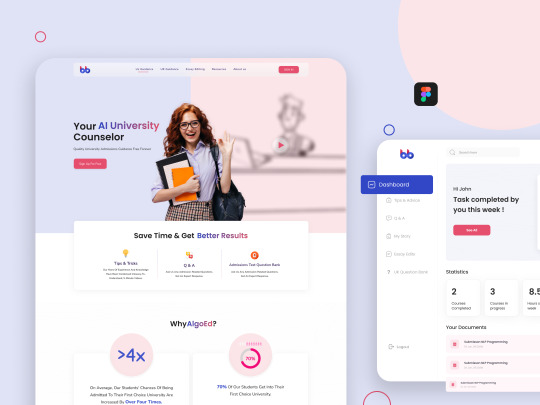
Thrilled to present Ai University Product – a groundbreaking AI-based university counselor website designed to elevate your educational aspirations! 🚀🎓

Explore the full project on Behance and join the conversation! 🚀
Your feedback is invaluable! 🙌 press "l" to show love
Contact us Today for your requirements!
Visit: Mastercreationz.com
Get free project estimation and consultation
or
Email: [email protected]
#dribbble#ui ux company#behance#product design#website design#ui ux design#Ai website#ai product design#ai education
2 notes
·
View notes
Text
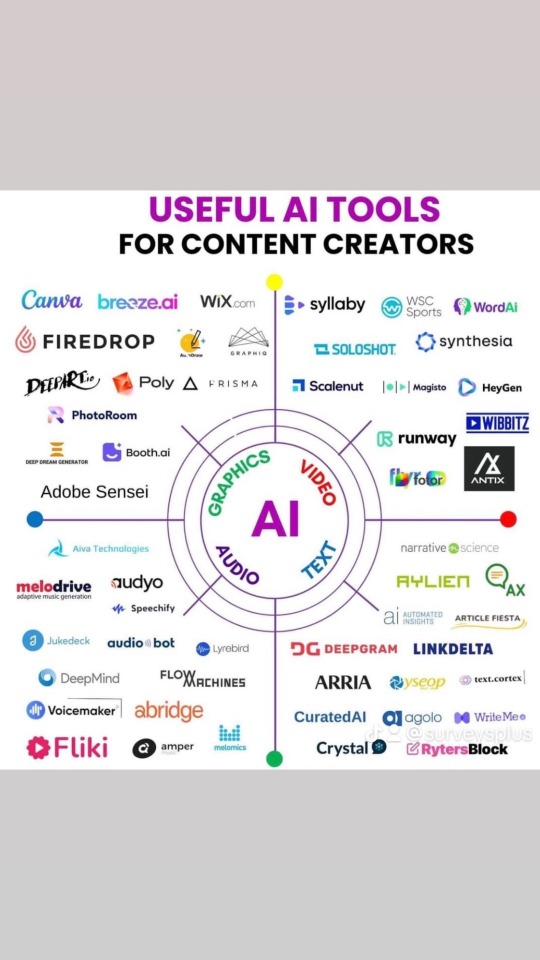
#ai technology#ai#ai tools#ai updates#open ai#technology#ai education#ai news#ai trends#business news
2 notes
·
View notes
Text

Do you Know That You Can Build Your Own Website With AI?
Here Is an article that shows how to use #Web10 AI for your
Website.
Check It Out Now
Stop Wasting Time on YouTube.
Could you check it out now?
#best ai tools#ai education#ai technology#ai tools#education technology#higher education#online education#educate yourselves#education#technology#ai website#youtube#AI#AI website#AI tools#AI websites#ai photo editor#AI photo edit#Photo upscale
2 notes
·
View notes
Text
Future of AI: Predictions and Trends in Artificial Intelligence
Introduction: Exploring the Exciting Future of AI
Artificial Intelligence (AI) has become an integral part of our lives, revolutionizing the way we work, communicate, and interact with technology. As we delve into the future of AI, it is essential to understand the predictions and trends that will shape this rapidly evolving field. From machine learning to predictive analytics, natural language processing to robotics, and deep learning to ethical considerations, the possibilities seem limitless. In this article, we will explore the exciting future of AI and its potential impact on various industries and aspects of our lives.
The Rise of Machine Learning: How AI is Evolving
Machine learning, a subset of AI, has been a driving force behind the advancements we have witnessed in recent years. It involves training algorithms to learn from data and make predictions or decisions without explicit programming. As we move forward, machine learning is expected to become even more sophisticated, enabling AI systems to adapt and improve their performance over time.
One of the key trends in machine learning is the rise of deep learning, a technique inspired by the structure and function of the human brain. Deep learning algorithms, known as neural networks, are capable of processing vast amounts of data and extracting meaningful patterns. This has led to significant breakthroughs in areas such as image recognition, natural language processing, and autonomous vehicles.
Predictive Analytics: Unleashing the Power of AI in Decision-Making
Predictive analytics, powered by AI, is transforming the way organizations make decisions. By analyzing historical data and identifying patterns, AI systems can predict future outcomes and provide valuable insights. This enables businesses to optimize their operations, improve customer experiences, and make data-driven decisions.
In the future, predictive analytics is expected to become even more accurate and efficient, thanks to advancements in machine learning algorithms and the availability of vast amounts of data. For example, AI-powered predictive analytics can help healthcare providers identify patients at risk of developing certain diseases, allowing for early intervention and personalized treatment plans.
Natural Language Processing: Revolutionizing Human-Computer Interaction
Natural Language Processing (NLP) is a branch of AI that focuses on enabling computers to understand and interact with human language. From voice assistants like Siri and Alexa to chatbots and language translation tools, NLP has already made significant strides in improving human-computer interaction.
In the future, NLP is expected to become even more advanced, enabling computers to understand context, emotions, and nuances in human language. This will open up new possibilities for virtual assistants, customer service bots, and language translation tools, making communication with technology more seamless and natural.
Robotics and Automation: AI's Impact on Industries and Jobs
AI-powered robotics and automation have the potential to revolutionize industries and reshape the job market. From manufacturing and logistics to healthcare and agriculture, robots and automated systems are already making significant contributions.
In the future, we can expect to see more advanced robots capable of performing complex tasks with precision and efficiency. This will lead to increased productivity, cost savings, and improved safety in various industries. However, it also raises concerns about job displacement and the need for reskilling and upskilling the workforce to adapt to the changing job landscape.
Deep Learning: Unlocking the Potential of Neural Networks
Deep learning, a subset of machine learning, has gained immense popularity in recent years due to its ability to process and analyze complex data. Neural networks, the foundation of deep learning, are composed of interconnected layers of artificial neurons that mimic the structure of the human brain.
The future of deep learning holds great promise, with potential applications in fields such as healthcare, finance, and cybersecurity. For example, deep learning algorithms can analyze medical images to detect diseases at an early stage, predict stock market trends, and identify anomalies in network traffic to prevent cyberattacks.
Ethical Considerations: Addressing the Challenges of AI Development
As AI continues to advance, it is crucial to address the ethical considerations associated with its development and deployment. Issues such as bias in algorithms, privacy concerns, and the impact on jobs and society need to be carefully considered.
To ensure the responsible development and use of AI, organizations and policymakers must establish ethical guidelines and regulations. Transparency, accountability, and inclusivity should be at the forefront of AI development, ensuring that the benefits of AI are accessible to all while minimizing potential risks.
AI in Healthcare: Transforming the Medical Landscape
AI has the potential to revolutionize healthcare by improving diagnosis, treatment, and patient care. From analyzing medical images to predicting disease outcomes, AI-powered systems can assist healthcare professionals in making more accurate and timely decisions.
In the future, AI is expected to play an even more significant role in healthcare. For example, AI algorithms can analyze genomic data to personalize treatment plans, predict disease outbreaks, and assist in drug discovery. This will lead to improved patient outcomes, reduced healthcare costs, and enhanced overall healthcare delivery.
Smart Cities: How AI is Shaping Urban Living
AI is transforming cities into smart, connected ecosystems, enhancing efficiency, sustainability, and quality of life. From traffic management and energy optimization to waste management and public safety, AI-powered systems can analyze vast amounts of data and make real-time decisions to improve urban living.
In the future, smart cities will become even more intelligent, leveraging AI to optimize resource allocation, reduce congestion, and enhance citizen services. For example, AI-powered sensors can monitor air quality and automatically adjust traffic flow to reduce pollution levels. This will lead to more sustainable and livable cities for future generations.
AI in Education: Enhancing Learning and Personalization
AI has the potential to revolutionize education by personalizing learning experiences, improving student outcomes, and enabling lifelong learning. Adaptive learning platforms powered by AI can analyze student data and provide personalized recommendations and feedback.
In the future, AI will play a more significant role in education, enabling personalized learning paths, intelligent tutoring systems, and automated grading. This will empower students to learn at their own pace, bridge learning gaps, and acquire the skills needed for the future job market.
Cybersecurity: Battling the Dark Side of AI
While AI offers numerous benefits, it also poses significant challenges in the realm of cybersecurity. As AI becomes more sophisticated, cybercriminals can exploit its capabilities to launch more advanced and targeted attacks.
To combat the dark side of AI, cybersecurity professionals must leverage AI-powered tools and techniques to detect and prevent cyber threats. AI algorithms can analyze network traffic, identify patterns of malicious behavior, and respond in real-time to mitigate risks. Additionally, organizations must invest in cybersecurity training and education to stay ahead of evolving threats.
Conclusion: Embracing the Future of AI and Its Limitless Possibilities
The future of AI is filled with exciting possibilities that have the potential to transform industries, enhance our daily lives, and address some of the world's most pressing challenges. From machine learning and predictive analytics to natural language processing and robotics, AI is evolving at a rapid pace.
However, as we embrace the future of AI, it is crucial to address ethical considerations, ensure transparency and accountability, and prioritize inclusivity. By doing so, we can harness the power of AI to create a better future for all.
As AI continues to advance, it is essential for individuals, organizations, and policymakers to stay informed about the latest trends and developments. By understanding the potential of AI and its impact on various sectors, we can make informed decisions and leverage its capabilities to drive innovation and positive change.
The future of AI is bright, and by embracing it with an open mind and a focus on responsible development, we can unlock its limitless possibilities and shape a better future for generations to come.
#ai#artificial intelligence#ai power#future of ai#ai cybersecurity#ai in education#future of artificial intelligence#dark side of ai#ai predictions#machine learning#ai education#ai medicine
3 notes
·
View notes
Text
5 Steps to Design Your Amazing Personalised Education Program with ChatGPT
Explore how to use ChatGPT to design a personalized educational program that is interactive and engaging for learners of all ages.
How to Design Your Personalised Education Program Using ChatGPT
In an era where technology seamlessly integrates into our daily lives, the potential for artificial intelligence (AI) to transform traditional educational methods is immense. ChatGPT, a sophisticated AI language model, stands at the forefront of this revolution, offering personalised learning experiences that cater to the unique…
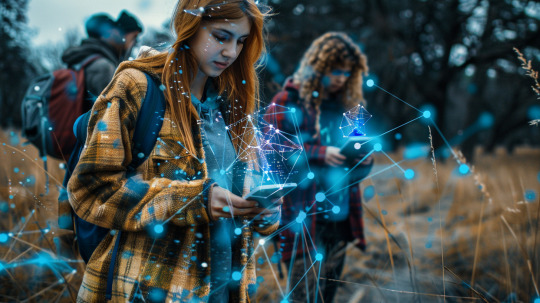
View On WordPress
#AI Education#ChatGPT#Education Technology#Graeme Smith#interactive learning#learner engagement#Lifelong learning#Personalized Learning#tailored education#thisisgraeme#voice commands
0 notes
Text
The Impact of AI on Everyday Life: A New Normal
The impact of AI on everyday life has become a focal point for discussions among tech enthusiasts, policymakers, and the general public alike. This transformative force is reshaping the way we live, work, and interact with the world around us, making its influence felt across various domains of our daily existence.
Revolutionizing Workplaces
One of the most significant arenas where the impact…

View On WordPress
#adaptive learning#AI accessibility#AI adaptation#AI advancements#AI algorithms#AI applications#AI automation#AI benefits#AI capability#AI challenges#AI collaboration#AI convenience#AI data analysis#AI debate#AI decision-making#AI design#AI diagnostics#AI discussion#AI education#AI efficiency#AI engineering#AI enhancement#AI environment#AI ethics#AI experience#AI future#AI governance#AI healthcare#AI impact#AI implications
1 note
·
View note
Text
Harms of AI in education: Beware of The Silent Threats
AI is also harmful in the educational system in the case that if any error during responding occurs from AI who will be responsible? Some AI algorithms are too complicated so this is not possible for everyone to understand. Now we are going to discuss the harmful effects of AI on education in detail.
0 notes
Text
Microsoft's Comprehensive Suite of Free Artificial Intelligence Courses: A Gateway to Mastering AI
"Exciting news! Microsoft offers free AI courses covering everything from basics to advanced topics. Perfect for all skill levels. Enhance your AI knowledge with expert-led training. Don't miss this opportunity - start learning today! #Microsoft #AICourse
In an era where Artificial Intelligence (AI) is reshaping industries and daily lives, Microsoft has taken a significant step forward by offering a series of free courses designed to empower professionals, enthusiasts, and students alike. These courses, available through various online platforms, provide an invaluable opportunity for individuals to enhance their understanding and skills in AI,…

View On WordPress
#AI Education#AI for Beginners#AI-powered Apps#Artificial Intelligence#Azure AI Services#Azure OpenAI Service#Computer Vision#Ethical AI#Free Courses#Generative AI#GitHub Copilot#Machine Learning#Microsoft#Microsoft Copilot Studio#Natural Language Processing#Neural Networks#Power Virtual Agents#Professional Development#Responsible AI#Visual Studio
0 notes
Video
youtube
AI in Education: Enhancing Learning and Personalization
0 notes
Text

#students#education#ai technology#ai#ai updates#ai tools#ai education#open ai#ai trends#ai news#software#business news
0 notes
Text
What is Ai Video Suite? Here's the Full Review from a User! Don't Miss Out in 2023!
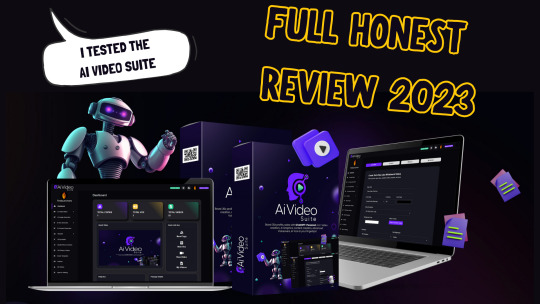
Ai Video Suite Review
In this Ai video Suite review, I will be walking you guys through a few things which include:
What is Ai Video Suite?
How Does Ai Video Suite Work and What Do You Get?
A Brief Insight into the Minds Behind Ai Video Suite
My Personal Experience with Ai Video Suite
The Pros and Cons
Does Ai Video Suite Really Work? My Honest Opinion
Unlocking E-Book
Conclusion
Final Thoughts
Now, let’s dive into the article:
What is Ai Video Suite?
Imagine a realm where your creative visions seamlessly transform into captivating videos that resonate deeply with your audience. Ai Video Suite is precisely that realm — an innovative platform that merges human ingenuity with the potential of artificial intelligence. It’s an all-inclusive ecosystem designed to empower creators, entrepreneurs, marketers, educators, and beyond, to craft videos that stand out in an increasingly crowded digital sphere.
This suite is more than just a tool; it’s a creative companion that understands your aspirations and enhances them through cutting-edge technology. It encompasses a diverse range of features, from whiteboard video creation to AI-powered graphics and voiceovers, all harmoniously united to amplify your storytelling capabilities.
How Does Ai Video Suite Work and What Do You Get?
At its core, Ai Video Suite harnesses the power of AI, particularly the remarkable GPT-4 technology, to provide a seamless and intuitive video creation experience. The suite offers a treasure trove of tools, each designed to cater to a specific aspect of video production. Whether you’re a novice dipping your toes into the world of content creation or a seasoned professional seeking to elevate your creative endeavors, Ai Video Suite has something to offer.
Within this ecosystem, you’ll find tools for crafting whiteboard videos that effortlessly bring your narratives to life. The AI-powered graphics generator is your creative canvas, transforming visuals into captivating works of art. Additionally, the Vox Creator and Editor enable you to infuse human-like voiceovers that resonate authentically with your audience.
A Brief Insight into the Minds Behind Ai Video Suite
Behind every innovation lies a team of visionaries and creators who dare to reimagine the possibilities. Ai Video Suite is no exception, boasting a lineup of dedicated individuals who understand the evolving landscape of digital content. Their collective vision is to democratize video creation, ensuring that even those without extensive technical expertise can harness the potential of AI-driven tools.
Among these creators, you’ll find individuals who have pioneered revolutionary solutions, each contributing their unique expertise to shape Ai Video Suite into what it is today.
My Personal Experience with Ai Video Suite
As I embarked on my journey with Ai Video Suite, I was met with a sense of excitement and curiosity. The interface greeted me with a user-friendly design, guiding me through the various features and options available. It was as if the suite was intuitively attuned to my creative needs, offering a seamless navigation experience.
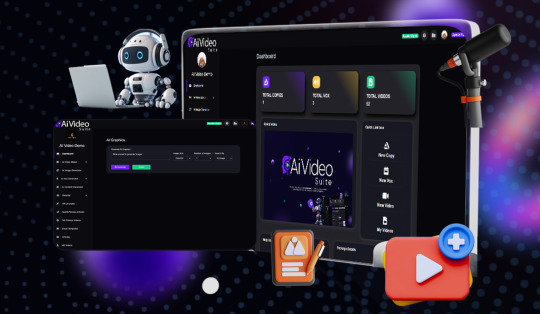
The Pros and Cons
Like any tool, Ai Video Suite comes with its set of advantages and considerations. On the positive side, its intuitive interface and AI-powered features simplify complex processes, making video creation accessible to a broader audience. The versatility of templates and graphics ensures that your content can adapt to various platforms, enhancing your reach and engagement.
However, it’s important to acknowledge that while the suite minimizes complexity, some level of learning and experimentation is still required, especially for those new to AI-driven technology. Additionally, the suite’s effectiveness is contingent on the quality of input and creative direction, so users should approach it with a willingness to explore and refine their ideas.
Does Ai Video Suite Really Work? My Honest Opinion
Now, the burning question — does Ai Video Suite truly deliver on its promises? Based on my experience, the answer is a resounding yes. The integration of GPT-4 technology is nothing short of remarkable. It’s like having a creative partner that not only understands your vision but also enhances it with an array of tools and capabilities.
The Vox Creator and Editor, powered by AI, take voiceovers to a new level of authenticity. The generated voices possess a human-like quality that resonates authentically with listeners, infusing emotions and personality into the videos.
Unlocking E-Book
Let’s talk about an exciting bonus that adds an extra layer of value to your Ai Video Suite journey. When you decide to take the leap and embrace the potential of Ai Video Suite through my link below, you’re not just gaining access to this transformative tool — you’re also receiving a complimentary bonus e-book. This exclusive e-book, titled “How to Produce Amazing AI Images with Midjourney”, is your guide to harnessing the power of AI in image creation.
In this e-book, you’ll uncover the secrets to crafting stunning visuals using the Midjourney platform, a trusted name in AI-driven image generation. Whether you’re looking to enhance your marketing materials, create eye-catching graphics for your website, or simply explore the possibilities of AI imagery, this bonus e-book is your companion on this creative journey.

Conclusion
In a world where attention is a precious commodity, Ai Video Suite emerges as a transformative force in the realm of video content creation. It’s a realm where creativity is boundless, where concepts evolve into captivating visual narratives that engage and resonate. Ai Video Suite isn’t just a tool; it’s an invitation to redefine how we tell stories, convey messages, and connect with our audience.
As we wrap up this exploration, the future of video content creation appears exhilarating and full of possibilities. So, whether you’re a marketer seeking to captivate your audience, an educator aiming to convey complex concepts, or an entrepreneur looking to elevate your brand, Ai Video Suite beckons — ready to usher you into a new era of creativity.
Final Thoughts
As this journey concludes, I invite you to consider the transformative potential of Ai Video Suite. It’s not merely a tool; it’s a catalyst for creative expression, enabling you to make your mark in the digital landscape. Whether you’re a seasoned creator or someone taking their first steps into the world of content, Ai Video Suite is a companion that empowers you to embrace innovation and embark on a creative journey that knows no bounds.
So, take the leap, explore the possibilities, and unlock the power of AI-driven video content creation. The future of storytelling is here, and Ai Video Suite is your ticket to a realm where your ideas come to life in stunning, captivating, and unforgettable ways. And remember, with your purchase through my link, you’re not only gaining access to Ai Video Suite but also receiving the exclusive bonus e-book “How to Produce Amazing AI Images with Midjourney”, enriching your creative toolkit even further.
Your creative journey awaits — are you ready to take the first step?
CLICK HERE TO GET THE FREE E-BOOK WITH AI VIDEO SUITE!
0 notes